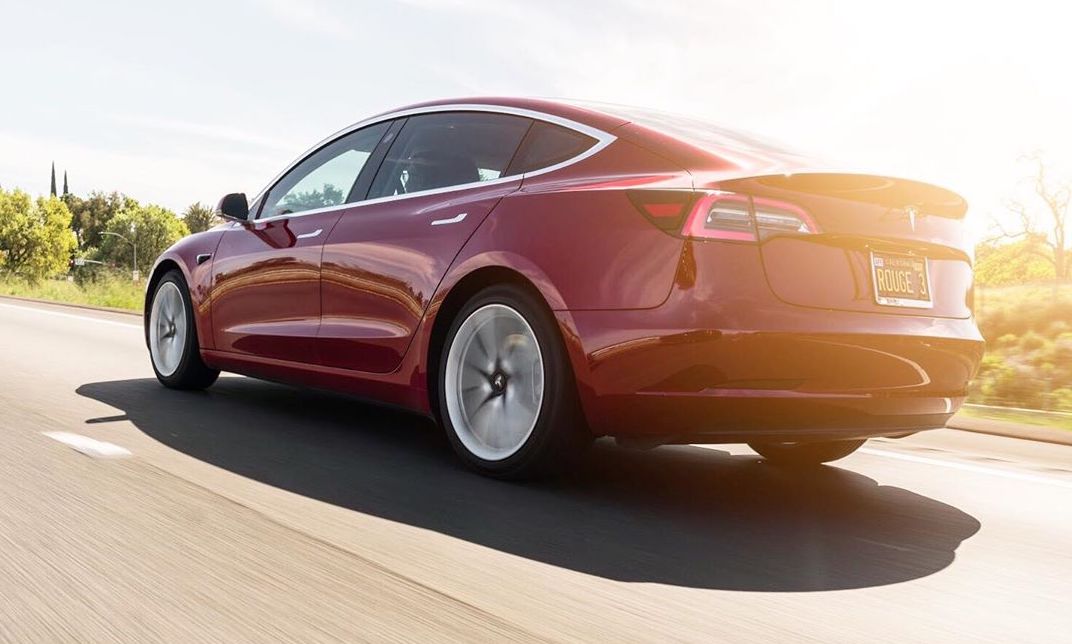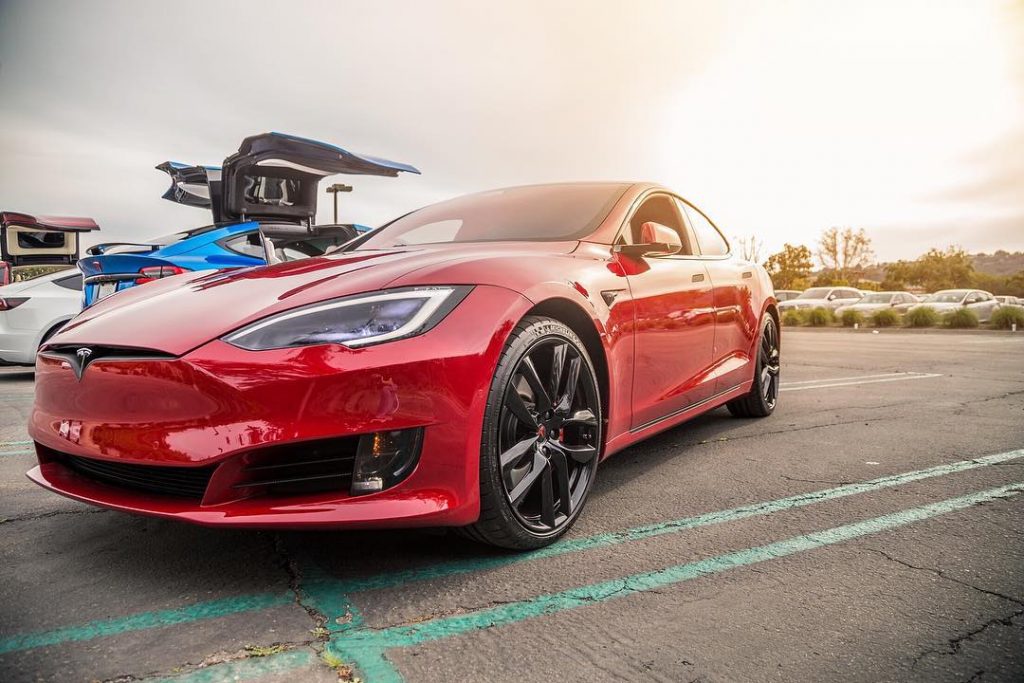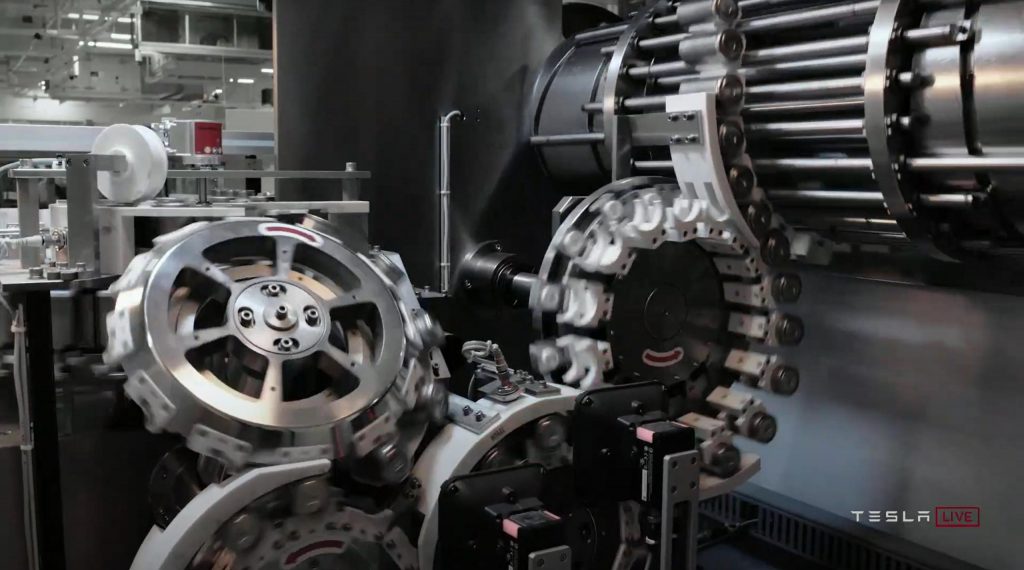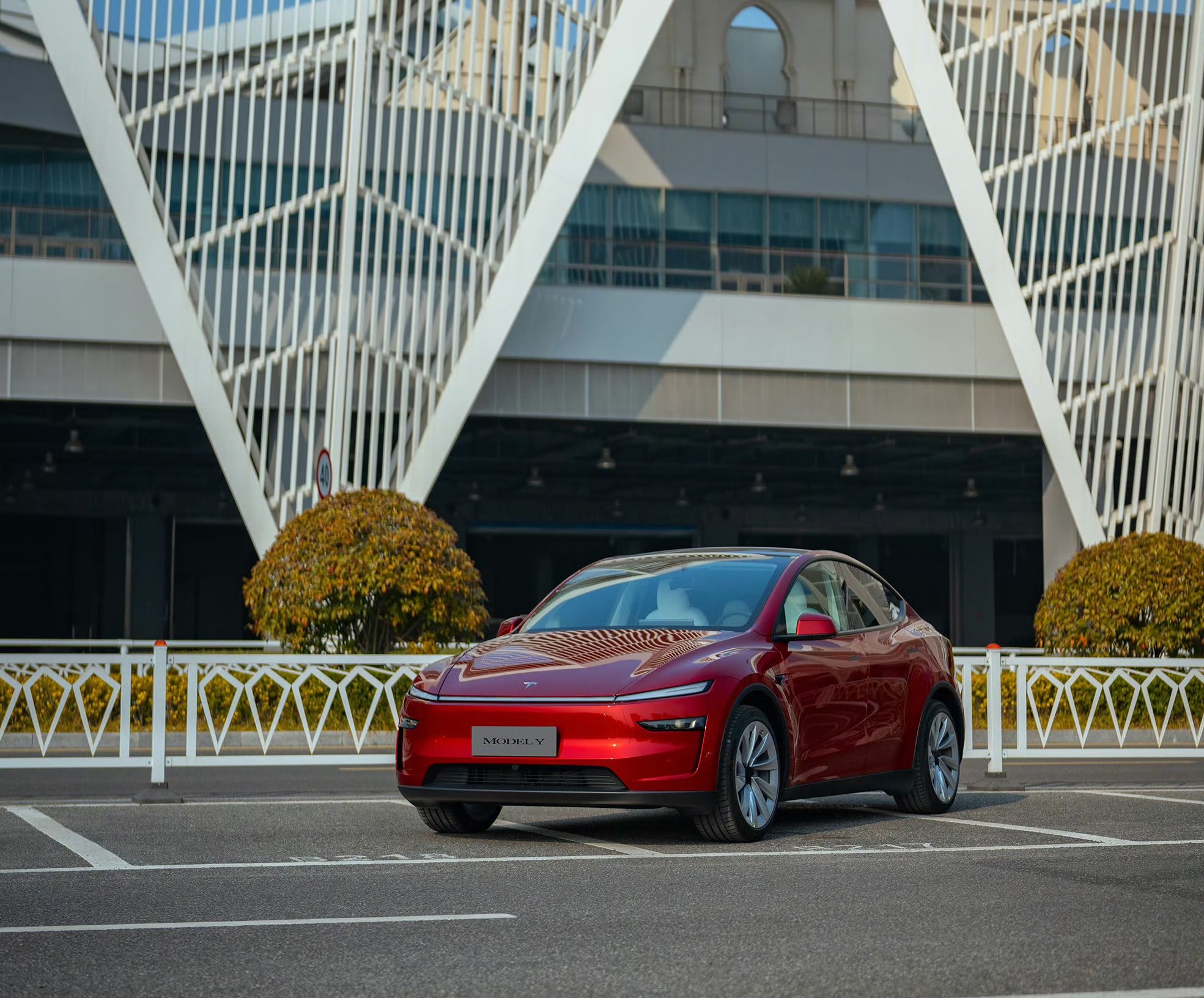

News
Tesla’s S3XY range updates show how ridiculously far legacy auto has fallen in the EV race
Anyone that has followed the Tesla story over the past few years would know that one of the primary talking points against the electric car maker is the impending competition that’s coming from more experienced, more competent carmakers. Critics argued that once legacy automakers get serious in their electric car efforts, a company as inexperienced as Tesla would easily be overwhelmed. This scenario has not happened at all — and if Tesla’s recent range updates to its S3XY lineup are anything to go by, it is becoming evident that legacy auto has fallen ridiculously behind in the electric car race.
Tesla’s recent range updates, which were rolled out together with the “refresh” of the Model 3, further cemented the company’s place at the top of the EV market. With the new updates, the Model 3 Long Range Dual Motor AWD was able to hit an EPA-estimated range of 353 miles per charge, and even its heftier, heavier sibling, the Model Y, was able to achieve a range of 326 miles. The Model X, an incredibly heavy tank of a vehicle, reached 371 miles per charge, and even the power-hungry Tesla Model S Performance is nearing 400 miles at 387 miles per charge.
It should be noted that Tesla was able to accomplish these improvements without any of the big updates that it announced during Battery Day. During the highly-anticipated event, Tesla revealed its batteries’ new 4680 form factor, which has 5x the volume of the Model 3 and Model Y’s 2170 cells. Tesla also announced a new vehicle manufacturing system that prioritizes single-piece casts and a structural battery pack. Other innovations, such as the use of high-nickel cathodes and silicon anodes, were discussed as well.

None of these innovations are in Tesla’s recently-updated vehicles.
Ultimately, Tesla’s recent updates highlight just how far the company has gone ahead of the pack in the electric vehicle sector. The fact that the electric car maker was able to achieve a 371-mile range for the Model X Long Range Dual Motor AWD with the same 100 kWh battery pack and the same 18650 cells as its Model X 100D predecessor is almost ridiculous. This is especially notable considering that the Audi e-tron, which has a battery pack that’s almost the same size as the Model X, has a range of 222 miles, and that’s the variant with the improved range already.
Tesla’s lead in range becomes even more significant when one considers the Model 3 and the Model Y, both of which utilize a battery pack that pretty much tops up at 75 kWh. A comparison of the two vehicles against the competition shows a stark contrast, with the Polestar 2, a car that’s largely considered as a legitimate rival to the Model 3, having an EPA-estimated range of 233 miles from a 78 kWh battery pack. The Jaguar I-PACE, a crossover that’s pretty close in size to the Model Y, follows the same pattern, having an EPA-estimated range of 246 miles per charge from a 90 kWh battery.

There are likely numerous reasons behind Tesla’s insane lead in the electric car sector today, but a good part of it likely has a lot to do with the company’s intense focus on battery tech and development. Tesla has been focused on improving and optimizing its batteries since Day 1, and as could be seen in the recent range updates of the S3XY lineup, this obsessive pursuit of optimization matters a lot. These efforts are not emulated at all with most legacy automakers, as veterans seem typically content with using off-the-shelf batteries from suppliers for their EV programs.
Yet perhaps the most uncomfortable reason behind legacy auto’s distance from Tesla’s vehicles today is something far simpler: hubris. While legacy automakers have been stating for years that they are serious about their future shift to electric cars, their actions have largely been far less tangible than their words. Today, it is almost as if Tesla’s competitors in the EV sector were far too comfortable just watching the electric car maker improve over the years. And now that Tesla has turned into a force that’s very difficult to ignore, they are scrambling to catch up.
Unfortunately, it is very difficult to catch a moving target. By the time legacy automakers can catch up to where Tesla is today, it is almost certain that the electric car maker will be even further ahead. This distance will likely be even farther, too, as Tesla’s next-generation battery technology is yet to enter the picture. Once Tesla’s 4680 cells are in production and its vehicles are being built with structural battery packs, the gap between the electric car maker and its competitors will most definitely be even more significant. And that, at least for legacy auto, is a scenario worthy of the final act of a tragedy.
Elon Musk
Tesla analysts believe Musk and Trump feud will pass
Tesla CEO Elon Musk and U.S. President Donald Trump’s feud shall pass, several bulls say.

Tesla analysts are breaking down the current feud between CEO Elon Musk and U.S. President Donald Trump, as the two continue to disagree on the “Big Beautiful Bill” and its impact on the country’s national debt.
Musk, who headed the Department of Government Efficiency (DOGE) under the Trump Administration, left his post in May. Soon thereafter, he and President Trump entered a very public and verbal disagreement, where things turned sour. They reconciled to an extent, and things seemed to be in the past.
However, the second disagreement between the two started on Monday, as Musk continued to push back on the “Big Beautiful Bill” that the Trump administration is attempting to sign into law. It would, by Musk’s estimation, increase spending and reverse the work DOGE did to trim the deficit.
Every member of Congress who campaigned on reducing government spending and then immediately voted for the biggest debt increase in history should hang their head in shame!
And they will lose their primary next year if it is the last thing I do on this Earth.
— Elon Musk (@elonmusk) June 30, 2025
President Trump has hinted that DOGE could be “the monster” that “eats Elon,” threatening to end the subsidies that SpaceX and Tesla receive. Musk has not been opposed to ending government subsidies for companies, including his own, as long as they are all abolished.
How Tesla could benefit from the ‘Big Beautiful Bill’ that axes EV subsidies
Despite this contentious back-and-forth between the two, analysts are sharing their opinions now, and a few of the more bullish Tesla observers are convinced that this feud will pass, Trump and Musk will resolve their differences as they have before, and things will return to normal.
ARK Invest’s Cathie Wood said this morning that the feud between Musk and Trump is another example of “this too shall pass:”
BREAKING: CATHIE WOOD SAYS — ELON AND TRUMP FEUD “WILL PASS” 👀 $TSLA
She remains bullish ! pic.twitter.com/w5rW2gfCkx
— TheSonOfWalkley (@TheSonOfWalkley) July 1, 2025
Additionally, Wedbush’s Dan Ives, in a note to investors this morning, said that the situation “will settle:”
“We believe this situation will settle and at the end of the day Musk needs Trump and Trump needs Musk given the AI Arms Race going on between the US and China. The jabs between Musk and Trump will continue as the Budget rolls through Congress but Tesla investors want Musk to focus on driving Tesla and stop this political angle…which has turned into a life of its own in a roller coaster ride since the November elections.”
Tesla shares are down about 5 percent at 3:10 p.m. on the East Coast.
Elon Musk
Tesla scrambles after Musk sidekick exit, CEO takes over sales
Tesla CEO Elon Musk is reportedly overseeing sales in North America and Europe, Bloomberg reports.

Tesla scrambled its executives around following the exit of CEO Elon Musk’s sidekick last week, Omead Afshar. Afshar was relieved of his duties as Head of Sales for both North America and Europe.
Bloomberg is reporting that Musk is now overseeing both regions for sales, according to sources familiar with the matter. Afshar left the company last week, likely due to slow sales in both markets, ending a seven-year term with the electric automaker.
Tesla’s Omead Afshar, known as Elon Musk’s right-hand man, leaves company: reports
Afshar was promoted to the role late last year as Musk was becoming more involved in the road to the White House with President Donald Trump.
Afshar, whose LinkedIn account stated he was working within the “Office of the CEO,” was known as Musk’s right-hand man for years.
Additionally, Tom Zhu, currently the Senior Vice President of Automotive at Tesla, will oversee sales in Asia, according to the report.
It is a scramble by Tesla to get the company’s proven executives over the pain points the automaker has found halfway through the year. Sales are looking to be close to the 1.8 million vehicles the company delivered in both of the past two years.
Tesla is pivoting to pay more attention to the struggling automotive sales that it has felt over the past six months. Although it is still performing well and is the best-selling EV maker by a long way, it is struggling to find growth despite redesigning its vehicles and launching new tech and improvements within them.
The company is also looking to focus more on its deployment of autonomous tech, especially as it recently launched its Robotaxi platform in Austin just over a week ago.
However, while this is the long-term catalyst for Tesla, sales still need some work, and it appears the company’s strategy is to put its biggest guns on its biggest problems.
News
Tesla upgrades Model 3 and Model Y in China, hikes price for long-range sedan
Tesla’s long-range Model 3 now comes with a higher CLTC-rated range of 753 km (468 miles).

Tesla has rolled out a series of quiet upgrades to its Model 3 and Model Y in China, enhancing range and performance for long-range variants. The updates come with a price hike for the Model 3 Long Range All-Wheel Drive, which now costs RMB 285,500 (about $39,300), up RMB 10,000 ($1,400) from the previous price.
Model 3 gets acceleration boost, extended range
Tesla’s long-range Model 3 now comes with a higher CLTC-rated range of 753 km (468 miles), up from 713 km (443 miles), and a faster 0–100 km/h acceleration time of 3.8 seconds, down from 4.4 seconds. These changes suggest that Tesla has bundled the previously optional Acceleration Boost for the Model 3, once priced at RMB 14,100 ($1,968), as a standard feature.
Delivery wait times for the long-range Model 3 have also been shortened, from 3–5 weeks to just 1–3 weeks, as per CNEV Post. No changes were made to the entry-level RWD or Performance versions, which retain their RMB 235,500 and RMB 339,500 price points, respectively. Wait times for those trims also remain at 1–3 weeks and 8–10 weeks.
Model Y range increases, pricing holds steady
The Model Y Long Range has also seen its CLTC-rated range increase from 719 km (447 miles) to 750 km (466 miles), though its price remains unchanged at RMB 313,500 ($43,759). The model maintains a 0–100 km/h time of 4.3 seconds.
Tesla also updated delivery times for the Model Y lineup. The Long Range variant now shows a wait time of 1–3 weeks, an improvement from the previous 3–5 weeks. The entry-level RWD version maintained its starting price of RMB 263,500, though its delivery window is now shorter at 2–4 weeks.
Tesla continues to offer several purchase incentives in China, including an RMB 8,000 discount for select paint options, an RMB 8,000 insurance subsidy, and five years of interest-free financing for eligible variants.
-

 Elon Musk23 hours ago
Elon Musk23 hours agoTesla investors will be shocked by Jim Cramer’s latest assessment
-

 News6 days ago
News6 days agoTesla Robotaxi’s biggest challenge seems to be this one thing
-

 News2 weeks ago
News2 weeks agoTesla’s Grok integration will be more realistic with this cool feature
-

 Elon Musk2 weeks ago
Elon Musk2 weeks agoElon Musk slams Bloomberg’s shocking xAI cash burn claims
-

 News2 weeks ago
News2 weeks agoTesla China roars back with highest vehicle registrations this Q2 so far
-

 News2 weeks ago
News2 weeks agoTexas lawmakers urge Tesla to delay Austin robotaxi launch to September
-

 News2 weeks ago
News2 weeks agoTesla dominates Cars.com’s Made in America Index with clean sweep
-

 Elon Musk1 week ago
Elon Musk1 week agoFirst Look at Tesla’s Robotaxi App: features, design, and more















